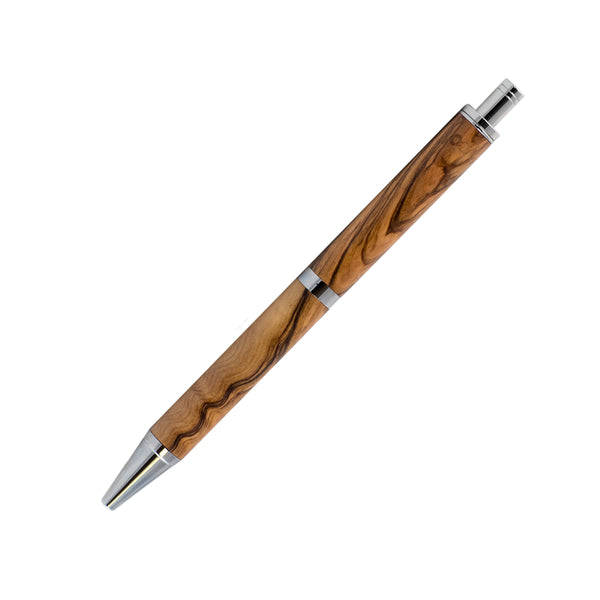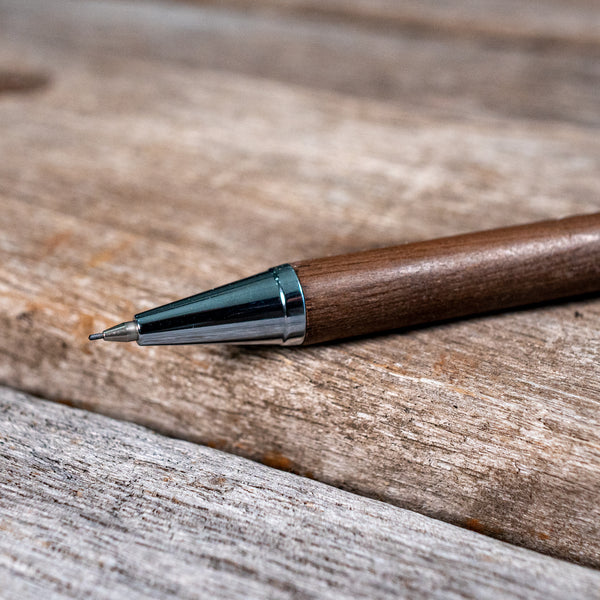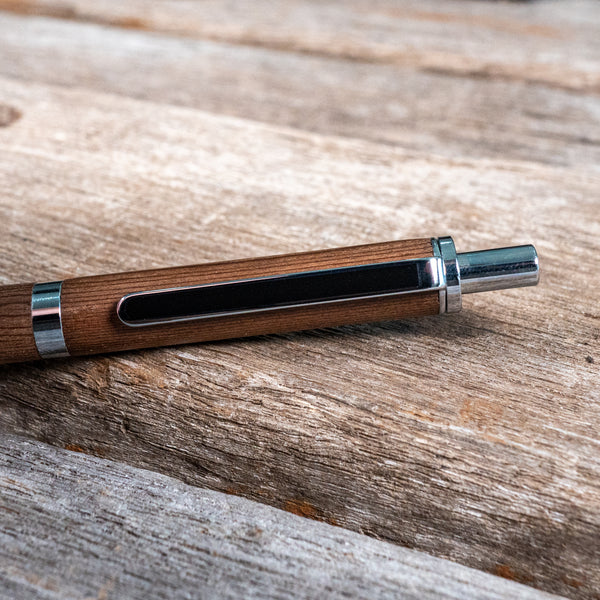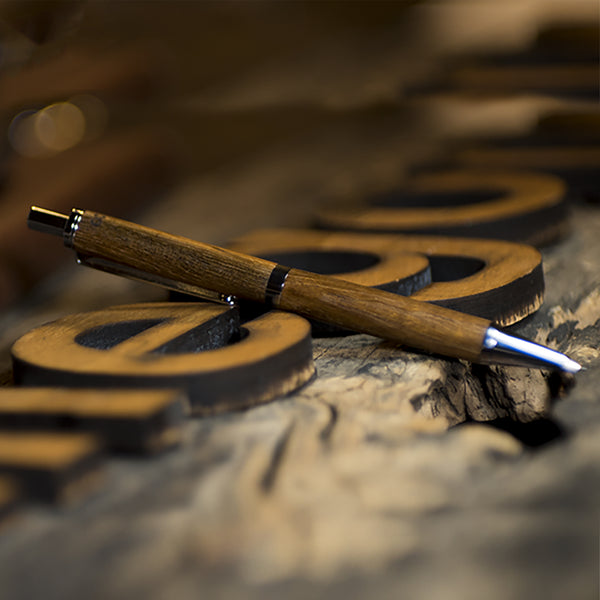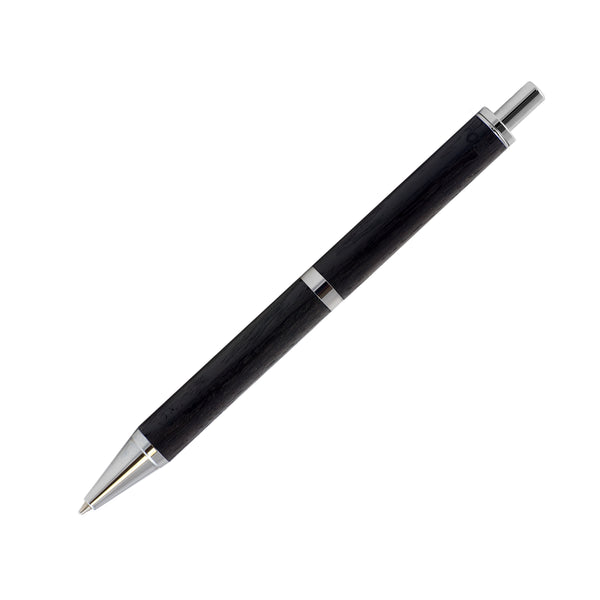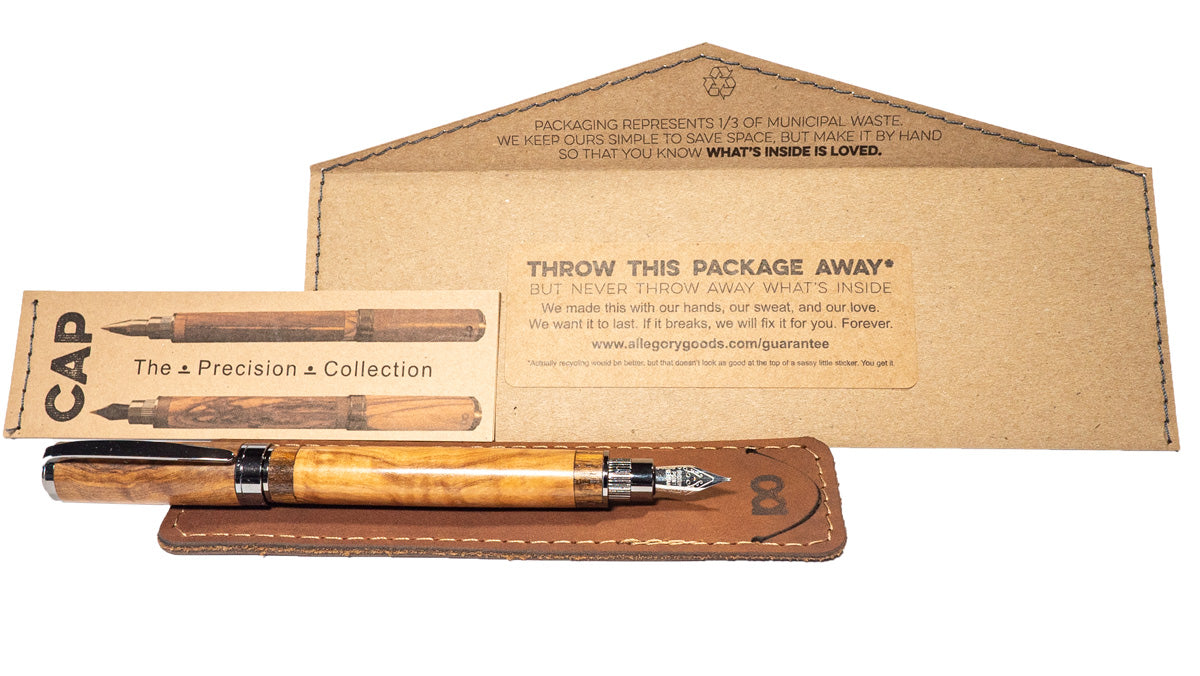The Model C | Mechanical Pencil
Click pencil made with your choice of historical woods.
The Model C is a medium to slim barreled mechanical pencil that uses .7 mm lead and has a hidden eraser.
- Made with your choice of woods, from 50,000 year old Kauri to cypress from the bottom of the Mississippi River.
- 0.7 mm lead and a built in eraser under the click button.
- Made in Chicago and guaranteed for life.
Choose your adventure
The Model C is part of our Workhorse Collection, a pen and pencil collection that lets you choose your favorite beautiful wood with a killer story. Choose the one that makes it most meaningful for you or your giftee!
Ancient Kauri

It's called ancient kauri, and it's up to 50,000 years old. Yes, 50,000! The oldest workable wood in the world, ancient kauri shows just the earliest signs of petrification. Called "whitebait," this phenomenon creates small veins of mineral deposits that give the wood a one-of-a-kind luminescence.
50,000 years ago, in what is now Northern New Zealand, a major natural event felled huge forests of kauri trees that had been growing for some 2,000 years. This event also created bogs in the area that protected these giants from the elements. Today these trees are typically found under farmland from which they are carefully excavated before the ground is returned to its previous contours.
Just for some perspective, here are a few things that happened on Earth less than 50,000 years ago…
- 16,000 years ago the depressions that would become the Great Lakes were fully formed.
- The last Ice Age ended approximately 5,000 years ago.
- Homo Sapiens reached the area from which these trees were recovered only around 40,000 years ago.
Bog Oak

No, this wood isn't stained black. 5,000 years in a peat bog in the Ukraine have naturally turned these huge, ancient oak trees black all the way through.
At the end of the last ice age rising water levels caused huge oak forests throughout Europe to die standing and fall into the muck. For the last 3,500 - 5,000 years these trees have been preserved in anaerobic conditions underneath peat bogs.
The ages have turned bog oak a deep black with dark brown grain. This is the result of a chemical reaction that occurred between the tannins in the oak and soluble irons present in the bog soil.
Bethlehem Olivewood

Each piece of this gorgeous wood is completely unique. The beautiful grain of Bethlehem olivewood can be straight, curly, dark, light, swirling... You get the gist.
Throughout Israel there are olive groves that have grown for over 2,000 years. These trees saw Rome rise and eventually fall. They watched much of Biblical history unfold, and they still stand today to bear witness to the trials faced by the region.
These trees are highly protected; those who maintain them gather branch trimmings and deadfall and make them available to tourists and woodworkers.
Sinker Cypress

Prior to the onset of modern industry and logistics, loggers practiced log driving, where floating logs down river to a temporary sawmill was the first step in the process of creating lumber. The term "lumberjack" comes from this process. Occasionally logs would sink and become trapped in the silt at the bottom of the river. If enough silt was laid down before rot and erosion set in, the log was preserved.
Today these century-old remnants of pre-industrial America are recovered from the bottoms of river beds, becoming one of the most sought-after varieties of reclaimed lumber on the market.
Picklewood Redwood

Prior to the onset and broad adoption of refrigeration technology, food preservation was a much more complex task. Pickling was a primary method of food preservation and a lifeline for many homes. Large amounts of lumber were required to construct pickling vats.
Today these vats are no longer needed in such large quantities, and they provide an excellent source of reclaimed lumber. The compounds used in the pickling process add beautiful character to the wood, evident in our picklewood redwood's beautiful deep red/brown tone.
Salvaged Indonesian Teak

Too many woodlands are diminished as the result of deforestation. One contributing factor is improper systems of recycling. We source our teak from IndoTeak Design, whose prerogative is to salvage the highest quality teak without any damage to the environment. By properly utilizing FSC Recycled 100% teak salvaged from Indonesia, their production operates as a zero-waste process. This means no trees are cut down as a result of their work. Instead, the wood is saved from 100-300-year-old structures that would have otherwise been demolished. They also provide excellent working conditions for their team in Indonesia.
Our Guarantee
The simplest and most powerful guarantee we could create.
- If we made it, it is guaranteed for life. We will repair or replace anything.
- If you buy it, you'll love it. If you don't, we'll work with you until you do, or you can return it for a full refund.
- No questions asked, no paperwork needed.
- If you lose it, or it gets destroyed outside of reasonable use, we'll sell you a replacement at half price.
- Lots of companies use words like "reasonable use" as a loophole. We don't. Wear and tear is part of reasonable use, and it is covered.
Shoot us a message at service@allegorygoods.com and let us know how we can help.
Shipping
Shipping Information
Our products are handcrafted, mostly to order. We make our smaller pieces in small batches of 10-20 items at a time. Because of the custom, handcrafted nature of our products, it usually takes us 2-3 business days to prepare your order for shipment.
Estimated shipping times begin when your order is shipped and vary by the carrier and service you choose. First-class and ground services usually take up a to a week to deliver to the United States and international first-class services usually take upwards of 3-4 weeks to deliver once we ship your package.
Please note that all carriers are experiencing delivery delays right now. It's important to us that you get your order as quickly as possible, but unfortunately after we drop off your package for shipping the delivery timeline is out of our hands. USPS and FedEx will be your best bet for tracking down information about your package. If you are having trouble getting answers, or if you just want some peace of mind, feel free to shoot us a message with questions or concerns at service@allegorygoods.com.

